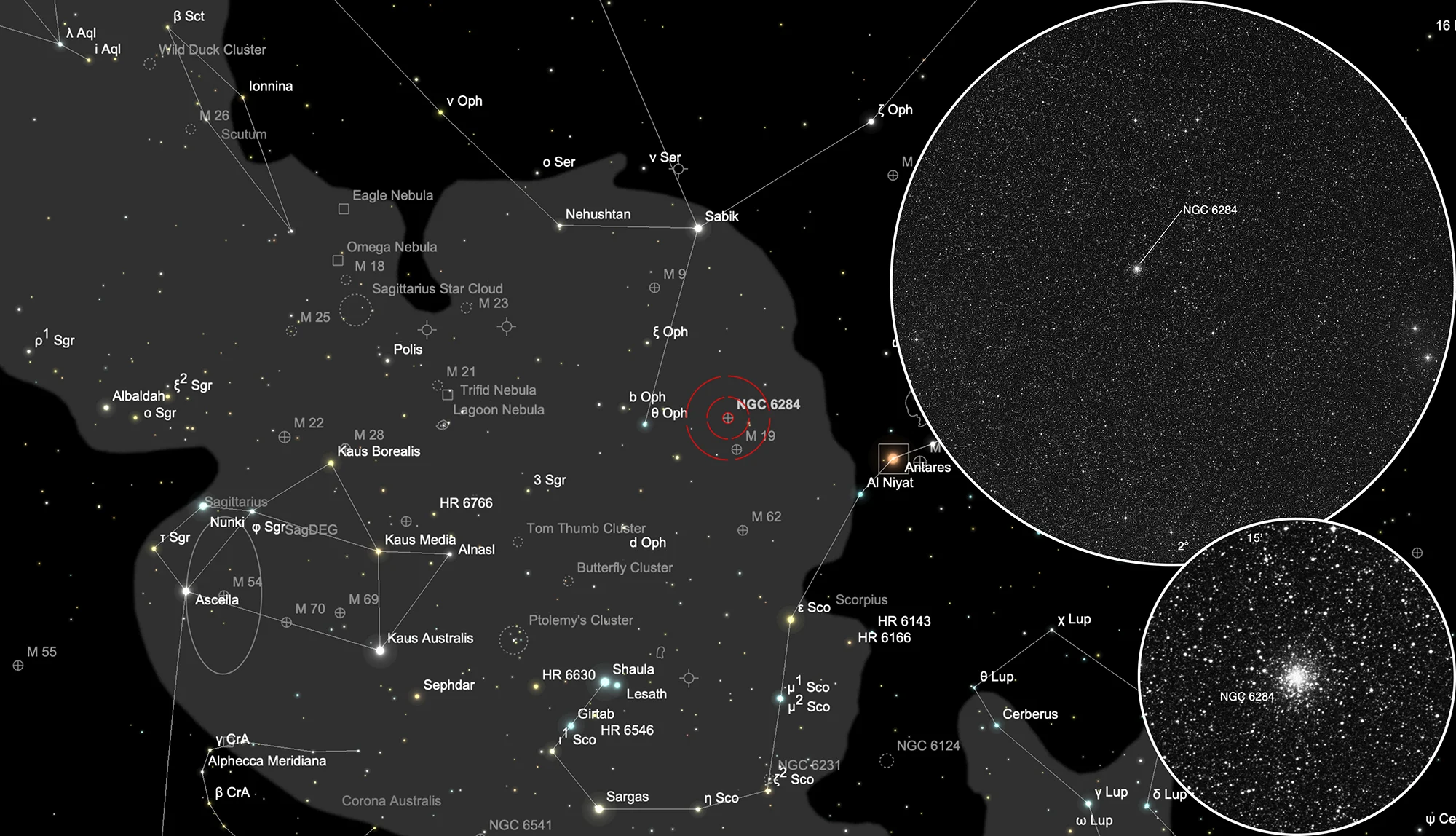Globular Cluster NGC 6284
History
This globular cluster was discovered by William Herschel on 22 May 1784 using his selfmade 18.7-inch reflecting telescope of 20-foot focal length. He classified it as a very compressed and rich cluster of star and listed it as VI 11 with the notes: «A fine miniature of the 19 nebula of the Connoissance des Temps (which is a cluster of very compressed stars much accumulated in the middle. 4 or 5' diameter all the stars red.) 2 or 2.5' diameter the stars faint red.» [463]
John Herschel observed the cluster on 1 July 1828 (sweep 30) from home in Slough using his 18.3-inch reflector and listed it as h 1976 with the notes: «Bright, large, brighter in the middle, resolvable; but too much twilight.» [466] Later observing from Cape of Good Hope on 13 May 1834 (sweep 453) he listed it as h 3665 with the notes: «Globular cluster; bright; round; gradually brighter in the middle; diameter = 7.0'; Resolved into stars of 16 magnitudes.» [11]
Physical Properties
| Designation | NGC 6284 |
| Type | GCL (IX) |
| Right Ascension (J2000.0) | 17h 04m 28.8s |
| Declination (J2000.0) | -24° 45' 51" |
| Diameter | 6.2 arcmin |
| Visual magnitude | 8.9 mag |
| Metric Distance | 15.300 kpc |
| Dreyer Description | globular, B, L, R, CM, rrr, st 16… |
| Identification, Remarks | WH VI 11; h 1976=3665; GC 4268; GCL 53; ESO 518-SC9 |
Finder Chart
The globular cluster NGC 6284 is located in the constellation Ophiuchus. On 8 June it in opposition with the Sun and is therefore highest in the sky at local midnight. For your location this means the best season for observation is in the months from February to November.
